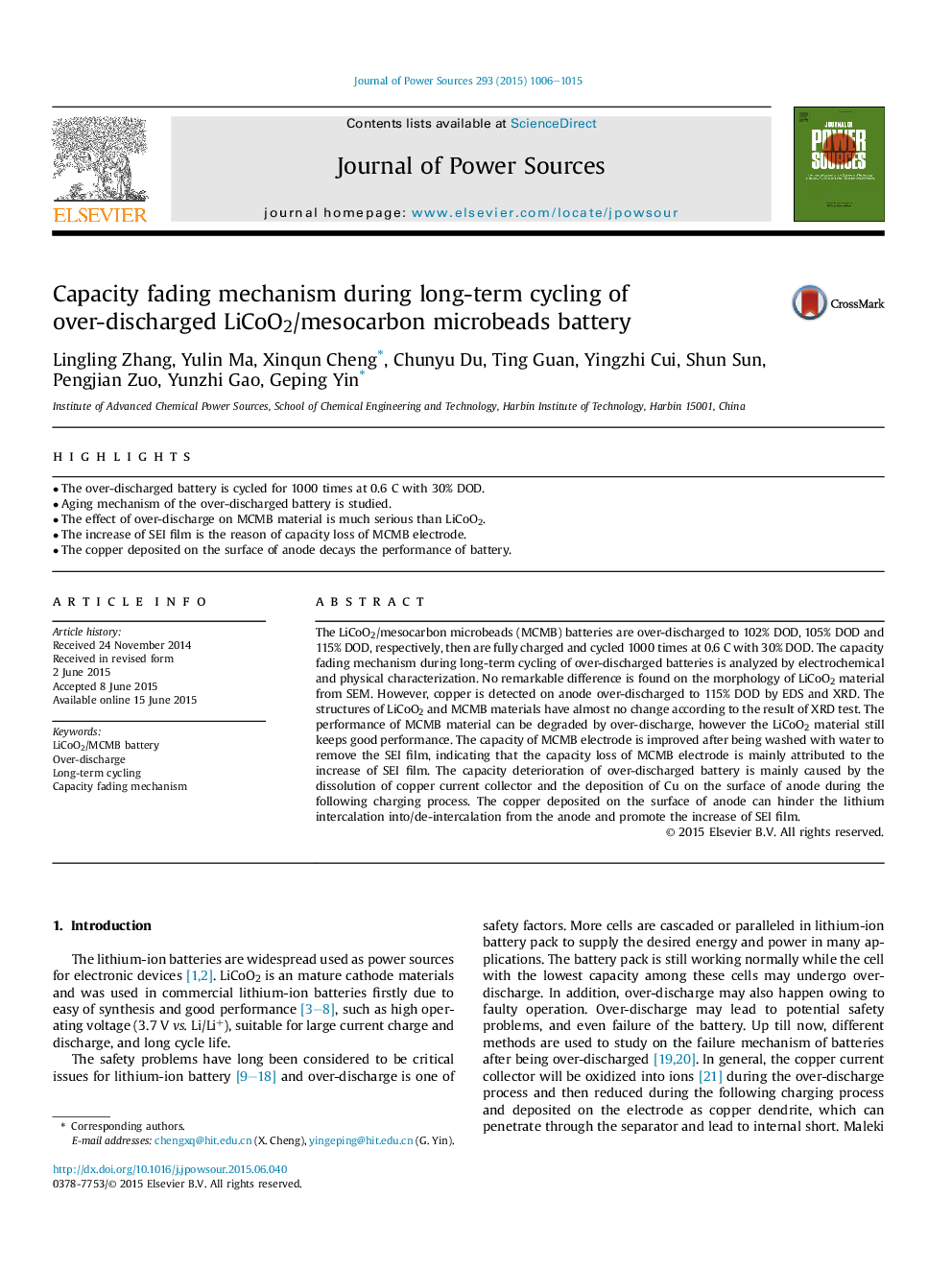| Article ID | Journal | Published Year | Pages | File Type |
|---|---|---|---|---|
| 7731634 | Journal of Power Sources | 2015 | 10 Pages |
Abstract
The LiCoO2/mesocarbon microbeads (MCMB) batteries are over-discharged to 102% DOD, 105% DOD and 115% DOD, respectively, then are fully charged and cycled 1000 times at 0.6Â C with 30% DOD. The capacity fading mechanism during long-term cycling of over-discharged batteries is analyzed by electrochemical and physical characterization. No remarkable difference is found on the morphology of LiCoO2 material from SEM. However, copper is detected on anode over-discharged to 115% DOD by EDS and XRD. The structures of LiCoO2 and MCMB materials have almost no change according to the result of XRD test. The performance of MCMB material can be degraded by over-discharge, however the LiCoO2 material still keeps good performance. The capacity of MCMB electrode is improved after being washed with water to remove the SEI film, indicating that the capacity loss of MCMB electrode is mainly attributed to the increase of SEI film. The capacity deterioration of over-discharged battery is mainly caused by the dissolution of copper current collector and the deposition of Cu on the surface of anode during the following charging process. The copper deposited on the surface of anode can hinder the lithium intercalation into/de-intercalation from the anode and promote the increase of SEI film.
Related Topics
Physical Sciences and Engineering
Chemistry
Electrochemistry
Authors
Lingling Zhang, Yulin Ma, Xinqun Cheng, Chunyu Du, Ting Guan, Yingzhi Cui, Shun Sun, Pengjian Zuo, Yunzhi Gao, Geping Yin,
